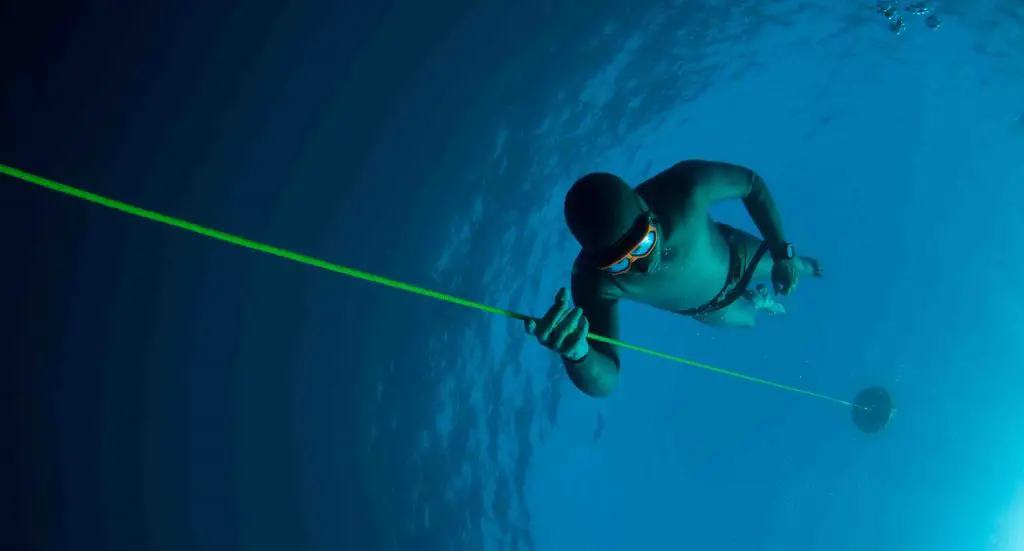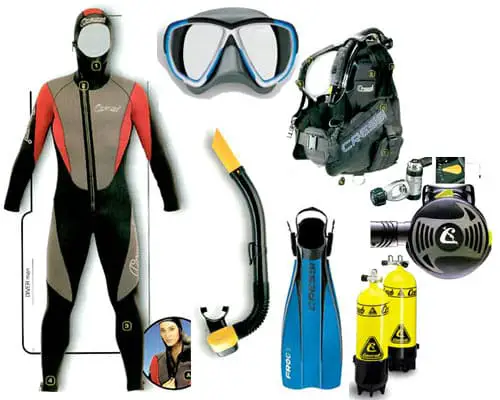The mysteries that lay beneath the sprawling oceans is one that man is still grappling with to this day. We are lucky to live in an age where it is possible to travel to the depths of the ocean without having to give up our precious oxygen!
Diving is a rigorous, challenging hobby that is not for everyone. But for those that tackle the training and are willing to brave the depths, it is one of the most rewarding experiences ever.
Unlike snorkeling, scuba diving takes you far below the surface. Your supply of oxygen strapped to your back. But you might not be aware that there is a limit on how far down a human can go before they are crushed.
Depth and Pressure

It is easy to think of water as this weightless mass just held in place by gravity. But that isn’t right. The ocean is heavy. As you descend, the water above you puts additional pressure on your body, the pressure that would normally be put upon you by the air, which is light enough to not matter. For every 10 meters you descend, you move into another section of pressure or an Atmosphere.
After you hit 20ft below the surface, you will need to take small breaks during your ascent back to the surface, or decompression stops. We cannot overstate just how important these stops are for your wellbeing.
The reason for this is a mix of the pressure and the oxygen tank on your back. It might seem counter-productive, but it is actually the air you breathe while under that is the most hazardous to you.
Decompression and Nitrogen
As you go deeper, the pressure on your body compresses your lungs. This reduces your air intake and the nitrogen will enter your bloodstream instead. This creates an intoxicating effect on the body that, while feeling fantastic, can prove fatal. Our bodies are fantastic machines that can regulate the nitrogen through the blood and deal with it, as long as too much doesn’t enter.
If you swim up and out of the water instantly, without making any stops, all the compressed air inside of you will decompress and you will be hit with a sudden influx of nitrogen. This is why decompression stops are so important. It allows the nitrogen to be released gradually and in a safe amount.
If you have only gone down 20ft or so, and you fail to make a decompression stop, you could become affected by Decompression Sickness which can cause dizziness, nausea, joint pains, and a few other symptoms.
Between 60-100ft, depending on your training, resilience, and diving suit, is when Nitrogen Necrosis can set in. This is far more serious as your body will start to take in more nitrogen and can lead to unconsciousness.
For the average diver, the tank on your back will be made up of a mix: roughly ¼ oxygen and ¾ nitrogen. This mix is common for first-time divers or those staying above 130ft. Which just so happens to be the average maximum depth most divers will ever reach. Beyond that, you need specialized equipment, gasses, tech, and training.
The Record Depth

In 2014 the world record for deepest dive was made in the Red Sea. An Egyptian diver took the plunge and dove 1,090ft below the surface. This is an extraordinary feat. One that required a herculean amount of training and specialized equipment, such as a rope that followed him the entire length down. Why the rope? Getting back out of the water is the hardest part of a dive. This rope allowed him to ascend easily, and slowly.
The ascent took nearly an entire day by itself. A testament to just how serious Nitrogen Necrosis can be to the human body.
This story shows just how far humans can actually go, but it also highlights why the average diver will only go to about 130ft in any given dive. The recording-breaking driver trained for this dive over four years. On top of being an Ex-marine and an active diving instructor. In the same regard that the average person might enjoy going for a run but wouldn’t race in the Olympics.
How Deep Can You Go?
There is no law telling you how deep you are allowed to go, but different driving schools and instructors will generally try to keep you at certain depths based on your experience and diving kit.
If you are on holiday and have booked a diving experience, with no prior training, you will most likely go somewhere between 30-40ft. Never any deeper. And you will be supervised the entire time.
If you have done enough training to become certified with a basic open water certificate, you should be fine to go to depths of 60ft. Be warned though, there are some people whose bodies simply aren’t suited to depths at all. You could train for years and still find 60ft too deep to handle. Do not try to push yourself.
Recreational Diving Gear

Diving has gradually become more advance as technology improves. But the essential equipment is still the same, no matter what extra gadgets you have. You will need:
Full Diving Suit
Diving Gloves
Fins
Scuba Tank
Depth Gauge
Diving Computer
Diving Mask
Diving Regulator
This seems like a lot of equipment, and it won’t be cheap. But it is ESSENTIAL. Diving is a commitment. One that definitely pays off, but it requires dedication and a lot of your time.
Once you have all that, you could look at some additional gear to add some variety into your dive, like looking into one of the best underwater scooters can transform your dive into an incredibly fun and exciting experience. Look at investing in a powerful diving torch, so you can see into the hidden crevices and caves of the depths.
Investing in a powerful underwater camera or GoPro is always great fun. Nothing beats the first-hand experience of diving but getting to relive those memories in crystal clear pictures are fantastic.
Commercial Diving
For those of you looking to start a career as a commercial diver, there are a few extra things you need to be aware of. Especially since you will be shouldering a much greater risk than a recreational diver.
Generally, your gear list is going to be the same as a recreational diver, although the strength and quality of it will be far superior. You might also get a lot of use out of a diving tablet. Like a diving computer, it will monitor all the vital information about your air supply, depth, pressure and the like, but will also have many helpful apps and functions to guide you through your accent.
The biggest difference will be your air supply. The ¼ oxygen to ¾ nitrogen mix is only effective up to 130ft. After that, you will be using a different mix. There are three major types.
Trimix: A mix that contains Nitrogen, Oxygen, and Helium.
Heliox: A mix of Helium and Oxygen
Hydrox: A mix of Hydrogen and Oxygen
There is no fixed ratio for any of these mixes, and their uses for commercial divers varies based on the type of job, time spent below, depth and personal ability.
Staying Safe
Diving is a fantastic hobby unparalleled in terms of experience, vistas, and physical fitness. But it can be dangerous, as we have seen. So whatever you do, make sure you are staying safe! Listen to your instructors. Do not push yourself past your limits. Take care of yourself and your gear.
But most importantly. Have fun!
